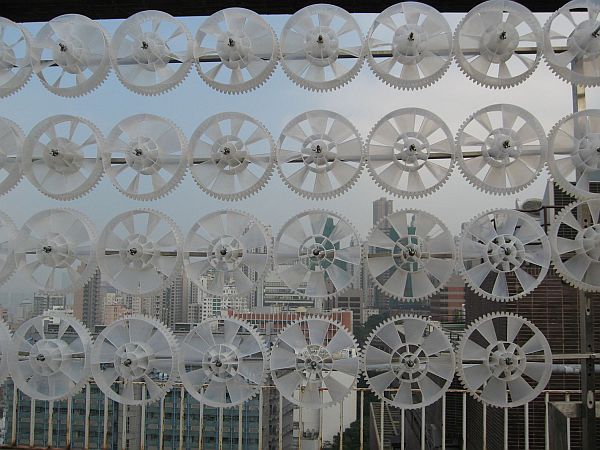
As we know it
Wind energy and solar photovoltaics are the currently proven clean energy sources. Though contributing only a small 6 per cent of global energy production and with problems of intermittent energy generation, these technologies continue to advance. Though clean energy’s share of total energy is still small, the benefit is that it has helped prevent or delay construction of more fossil fuel power plants that would emit CO2 into the skies for the next 25 years.
The emergence of Micro Wind Turbines should add to the availability of clean energy sources, especially to the off-grid rural areas in large parts of the developing world.In wind turbines, the major trend has been towards bigger and better turbines. In the early days of wind turbines, power outputs were typically in the 100 KW to 300 KW range. With modern aerodynamic wind turbines, outputs of 1 MW to 5 MW are practical. The larger power output needs a bigger swept area for the turbine and consequently a larger footprint on the ground to locate the tower and the electrical substation and to provide access for periodic maintenance.
The minimum wind speed needed for power generation has come down with improved designs, but is still in the 10 meter per second to 25 meter per second range. Such wind speeds are available round the year only in coastal areas and on top of hills or where the contours of the terrain help form a wind funnel. The capital costs of installing a 1 MW wind turbine are close to $1 million. Even with government subsidies, accelerated depreciation write-offs and assured off-take of power at preferential rates, the wind turbine remains beyond reach except for large corporations and municipal entities.
Wind velocity varies with seasons and even on a given day, there would be gusts of wind and periods of lull. Energy production from wind turbines consequently needs a back-up power source and that inevitably is fossil fuel based. The larger the wind turbine capacity, the greater the effect of intermittent dips on the grid voltage and frequency. With fossil power also being cheaper than wind power, the acceptance of clean energy has needed legislative or financial pressure.
Need for change
If wind energy could change from being a fashionable ‘green badge’ technology to one that is adopted whole-heartedly by the common man, it has much greater chances of being sustained in the long term. The emergence of practical Micro Wind Turbines of affordable cost appears to meet most of the parameters needed to make the technology acceptable for specific applications.
The rural areas of large parts of Asia, Africa and South America are ill served with grid power. Even where power lines have been laid, there are frequent power interruptions and brownouts. The rural areas, therefore, install and use portable gen-sets burning petroleum fuels to provide back-up power for their needs of lighting and ventilation and for their entertainment and communication needs. These portable gen-sets pollute worse than large fossil power plants and fuel supply in rural areas is as erratic as power supply.
Micro Wind Turbines, are now available for costs of around $6 per watt of output, still expensive but not beyond reach with some government subsidies. Battery storage of power can help tide over dips in power output. The installation and maintenance of Micro wind turbines are not very complex and can be handled by rural mechanics who service farm equipment and water pumps.
What’s next
There are some 350 manufacturers of Micro Wind Turbines around the world. Micro Wind Turbines produce some 38.7 MW of power, half of it in the US. This output is projected to grow an astounding 30 times in the next 5 years as the more installations come on stream.
Three examples of Micro Wind Turbines are discussed below to illustrate the technology.
1. Ventus
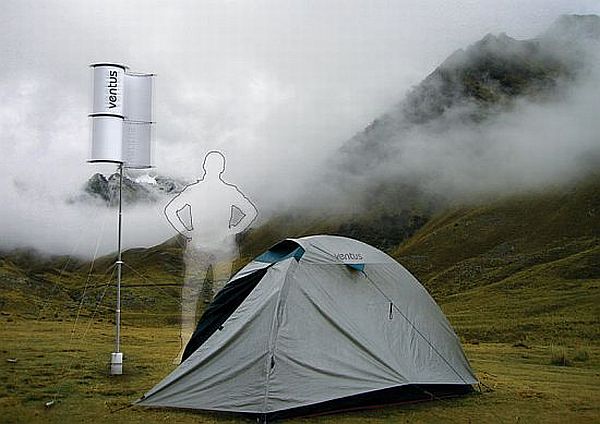
VentusThe entire system which features a vertical axis wind turbine, turbine mast and batteries can be folded and packed in a tube just 10cm in diameter.
The Ventus is a concept vertical axis Micro Wind Turbine by designer Sergei Kuckir, designed for use by outdoor campers. The wind turbine can be easily assembled and dismantled, fitting into a tube of only 10 cm diameter x 65 cm length and weighing only 4 Kg. The kit uses a vertical axis Savonius type of wind turbine that has the advantage that it does not have to be aligned to face the wind direction. The turbine produces 400 watts of power, that is stored in batteries. The kit is estimated to cost about $1000.
The Ventus is featured here is to illustrate the concept that a Micro wind turbine is simple to install and can generate adequate power to meet the basic power needs of a rural home. The cost is affordable, perhaps with some element of government subsidy. The vertical axis turbine would, however, need higher wind speeds of 10-15 meters per second that may not be available everywhere.
2. Totempower micro wind turbine
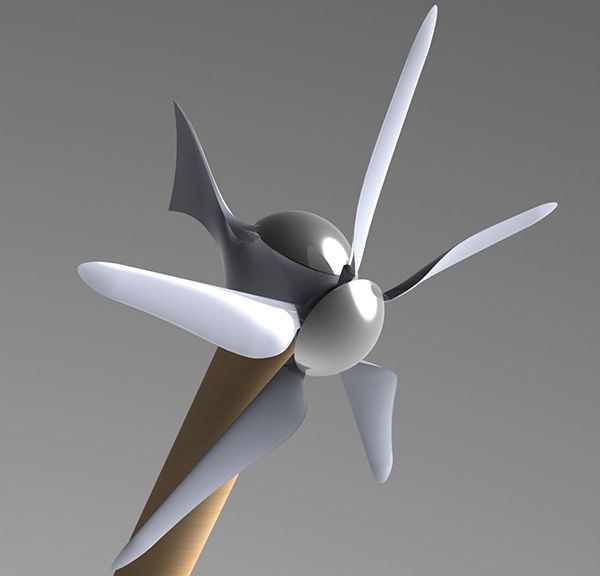
TotempowerThe domestic version of this turbine is expected to produce 2,000 kWh per year
Totempower Energy is a Hampshire, UK based company that was started up in 2010 to commercialize the Passive Air-jet Vortex Generator (PAVOG) developed by Dr. Simon Prince at the City University. The turbine blades are provided with micro grooves to improve airflow over the surface and increase power output, especially at low wind speeds.
Totempower is developing two models, one to generate 2000 KWH per year for use by individual homes and the other, a community model to generate 15,000 KWH per year. The target price is around $7000 for the 2000 KWH single home unit, which represents a pay-back period of about 5 years. In the UK market, Totempower plans to sell about 16,000 of these Micro Wind Turbines by 2016. If the lab results are replicated in field installations, this design could serve the need for distributed power sources in all parts of the world.
3. Micro VAWT
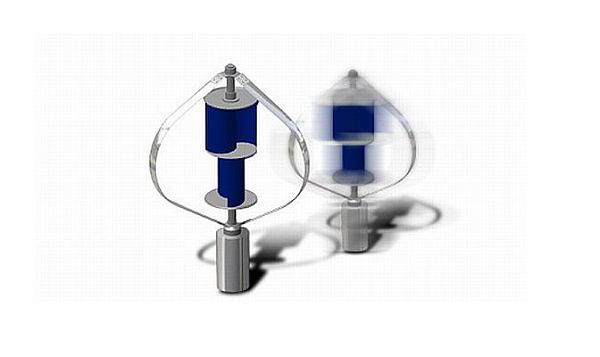
Micro VAWTThis wind power generator, which converts wind energy into electricity, comes in a 50x50x150 cm packing.
Hi Energy a Taiwan based company has been making these Vertical Axis Wind Turbines (VAWT) in various power capacities like 400 watts, 1500 watts and 3000 watts for specific applications. These applications include street lighting, telecom towers and fishing boats. These Micro Wind Turbines are small in size, needing only 50 cm x 50 cm x 150 cm space and are easy to install. They are also noise and vibration free.
Such Micro Wind Turbines could be installed in rural areas and for off-grid applications.
In conclusion, Micro Wind Turbines appear to be a promising new area for clean power and especially suited for application in the power starved rural areas of the developing world.
Source: ecofriend
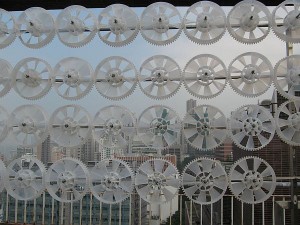
 Follow
Follow